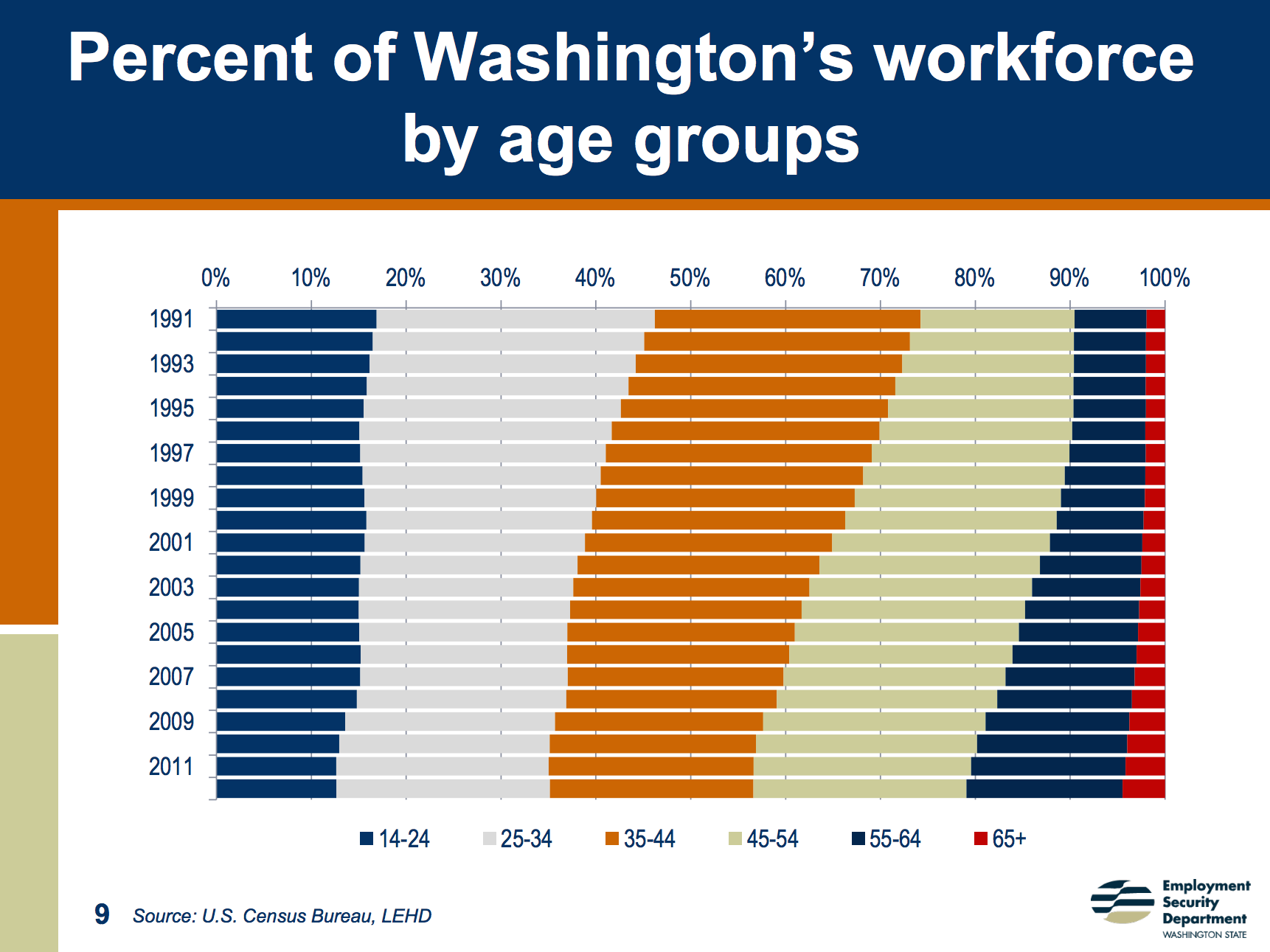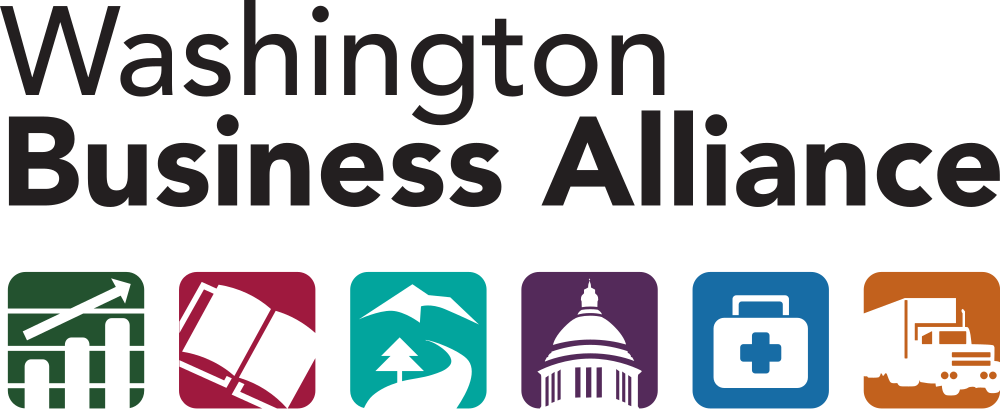by Hans D. Stroo on May 19, 2015
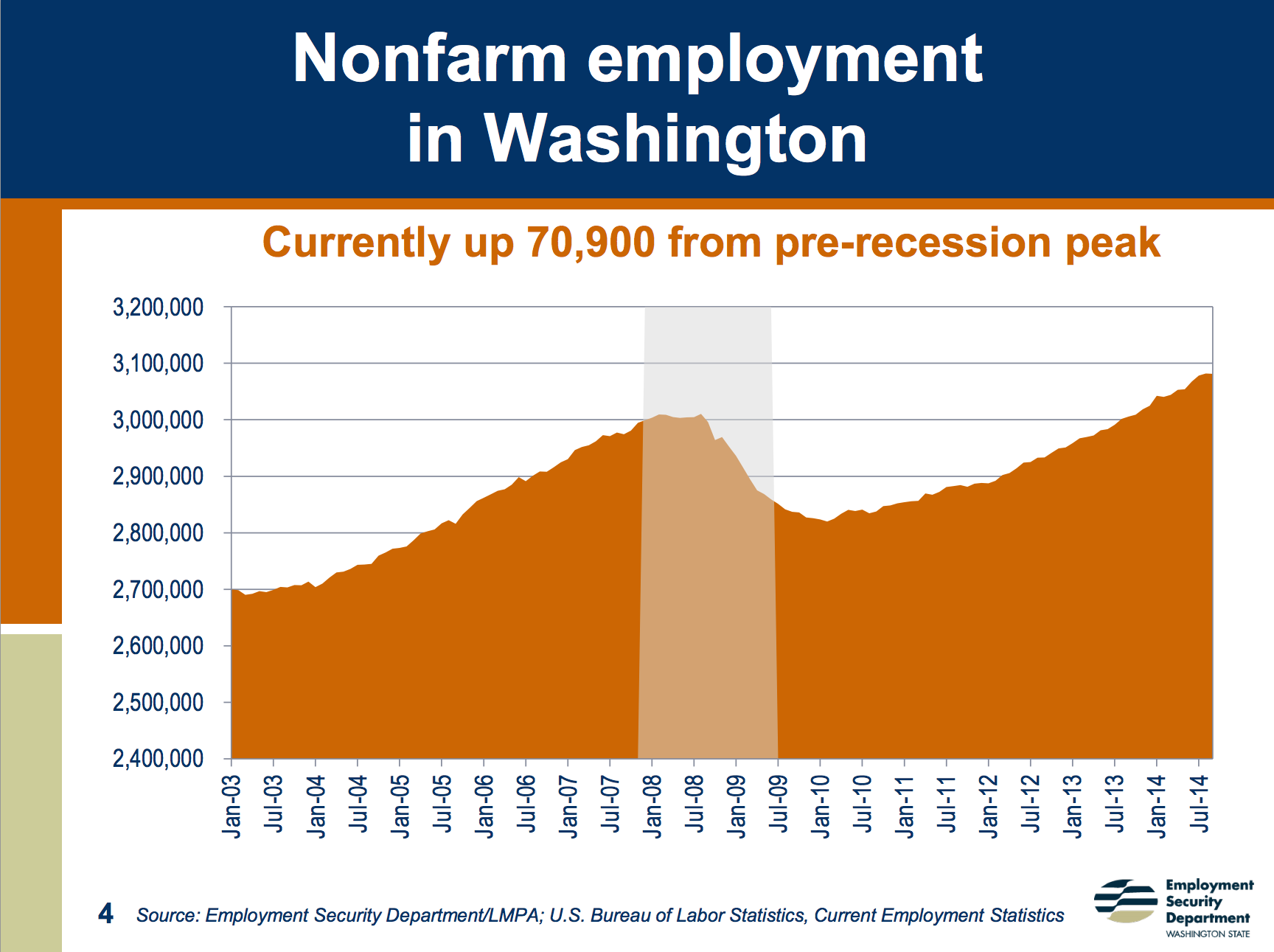
Washington State has largely recovered from the Great Recession. Statewide unemployment peaked in 2010 at 10.4% and has been steadily declining since then. Demand for unemployment benefits and employment services has been decreasing.
Beginning in 2013, after five straight years of decline, real median household income finally began to creep upwards again. In a “big picture” sense, the state’s economy has recovered all jobs lost during the recession.
Yet recession and recovery have been mixed across industries. The economy we’ve recovered is not quite the same one we once lost. Things have shifted.
1.) Information technology services have been the fastest growing subsector
Since 2007, the number of jobs in data processing, internet publishing, and other info services has more than doubled. Other big gainers include primary metals manufacturing, water transportation, and computer/electronics manufacturing.
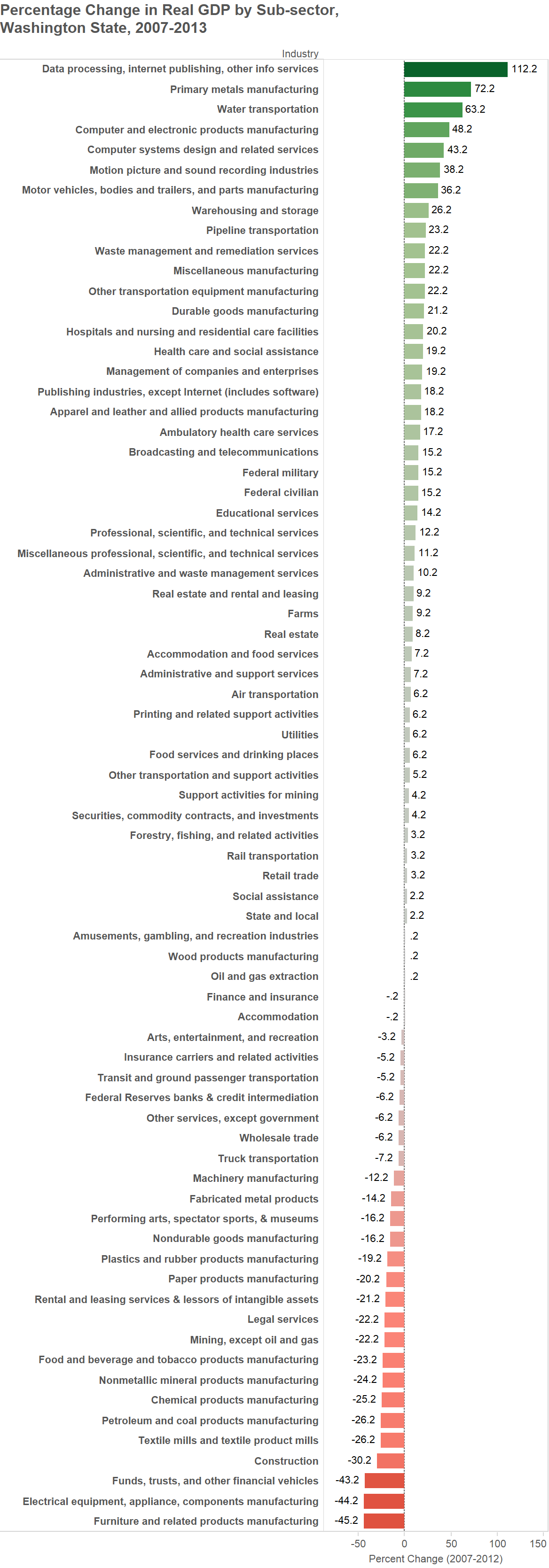
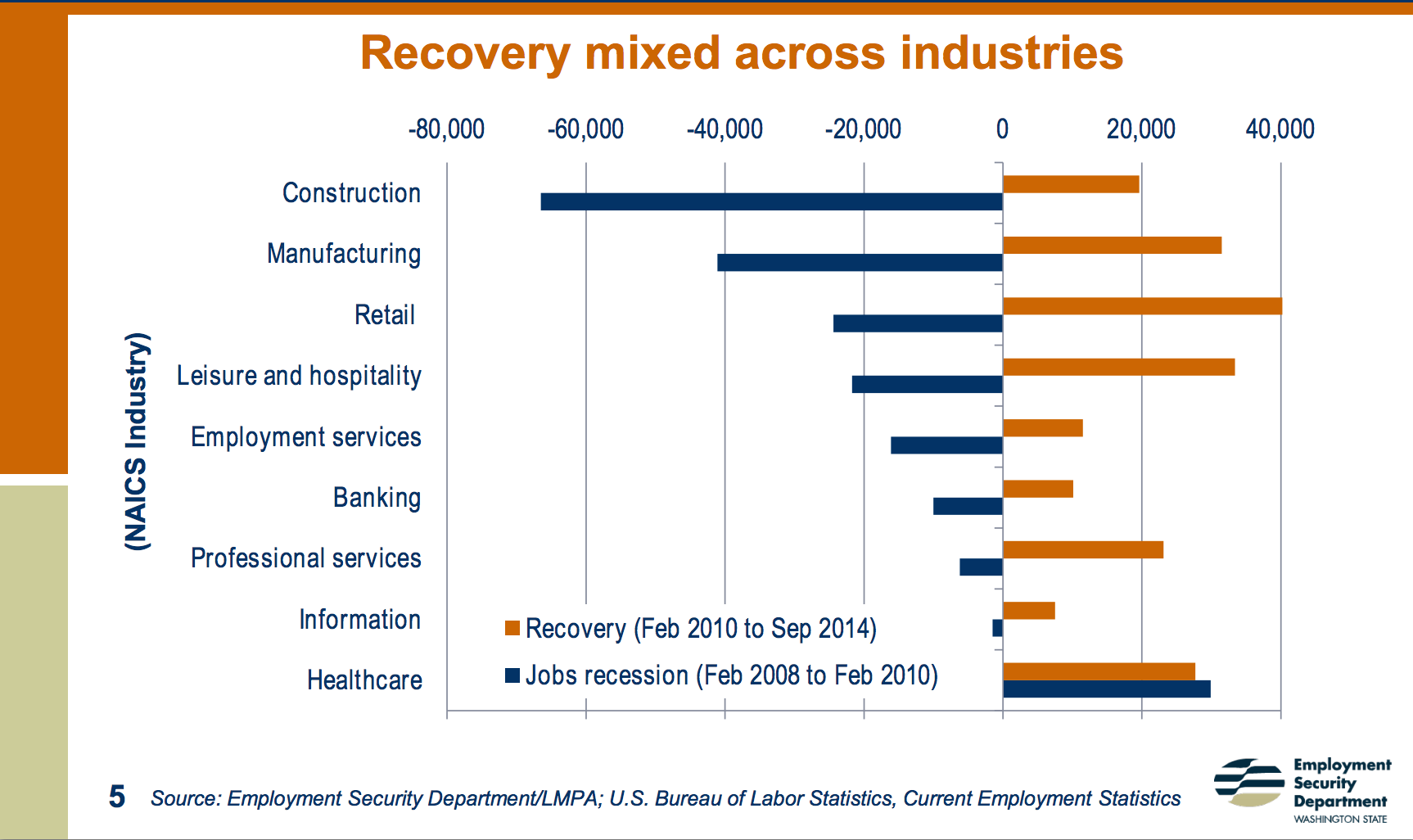 2) Construction hiring still lags
2) Construction hiring still lags
Construction was the sector hit hardest by the recession. Between Feb. 2008 and Feb. 2010, the state’s construction sector lost almost 70,000 jobs. The jobs recovery only brought back about 20,000 of those type of jobs.
Even Seattle’s $5 billion construction boom has not been enough to offset the statewide losses. While apartment & condo construction is steady, single family home construction is declining. As Seattle Times columnist John Talton observed, “Privately owned housing starts statewide were 1,315 in January. Compare that to levels of 3,000 a month or more in the mid-2000s… We have a long way to go before reaching the old normal.”
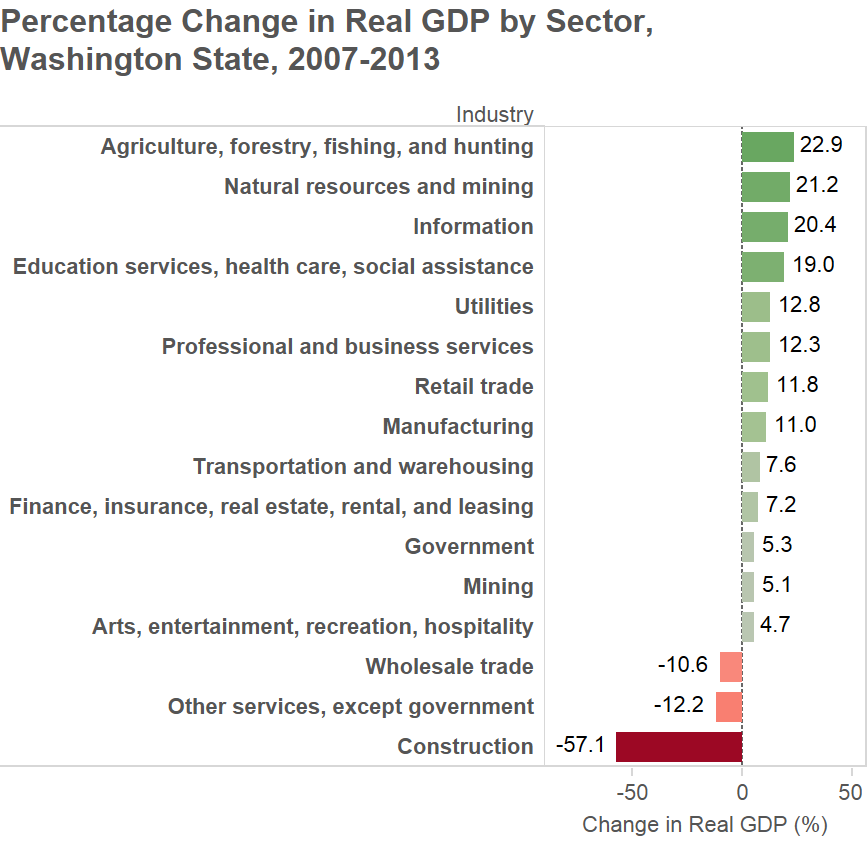
3.) The workforce is aging out.
The shifting demographics of the state’s workforce create an imperative for nimble, demand-driven workforce development mechanisms. These are needed to make sure that young people are ready to step into high-skilled, high-wage jobs as older Washingtonians transition out of the workforce.
